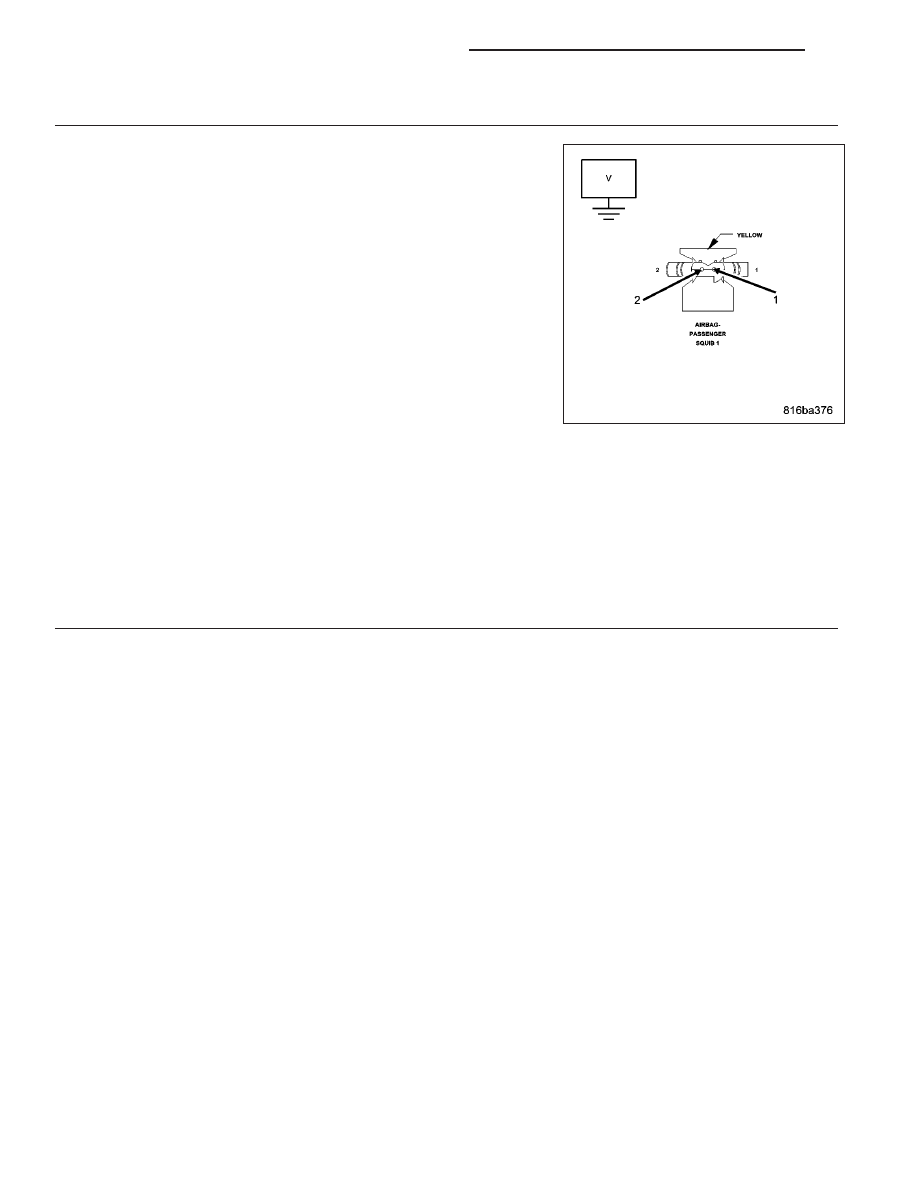Jeep Liberty KJ. Manual - part 215

3.
CHECK PASSENGER SQUIB 1 LINE 2 CIRCUIT AND PASSENGER SQUIB 1 LINE 1 CIRCUIT FOR A
SHORT TO BATTERY
WARNING: To avoid personal injury or death, turn the ignition off,
disconnect the battery and wait two minutes before proceeding.
Disconnect the 8443 Load Tool from the Passenger Airbag Squib con-
nector.
Disconnect the ORC connectors.
NOTE: Check connectors - Clean and repair as necessary.
Connect the 8443 Load Tool ORC Adaptor to the ORC connector.
Measure the voltage of the Passenger Squib 1 Line 2 circuit between
the Passenger Airbag Squib connector and ground.
Measure the voltage of the Passenger Squib 1 Line 1 circuit between
the Passenger Airbag Squib connector and ground.
Is there any voltage present on either circuit?
Yes
>> Repair the Passenger Squib 1 circuits with voltage present
for a short to battery.
Perform *AIRBAG SYSTEM VERIFICATION TEST - VER 1.
No
>>
WARNING: If the Occupant Restraint Controller (ORC) is dropped at any time, it must be replaced. Failure to
take the proper precautions can result in accidental airbag deployment and personal injury or death.
WARNING: To avoid personal injury or death, turn the ignition off, disconnect the battery and wait two min-
utes before proceeding.
Replace the ORC in accordance with the Service Information.
Perform *AIRBAG SYSTEM VERIFICATION TEST - VER 1.
4.
CHECKING STORED OR INTERMITTENT CODES
NOTE: Diagnose and repair all active codes before diagnosing stored codes. Refer to the Table of Contents
in this Section for a complete list of airbag system diagnostic procedures.
With the scan tool, record and erase all Airbag System Module DTCs.
WARNING: To avoid personal injury or death, turn the ignition off, disconnect the battery and wait two min-
utes before proceeding.
Using the wiring diagram/schematic as a guide, inspect the related wiring and connectors for chafed, pierced,
pinched, and partially broken wires, and for broken, bent, pushed out, corroded, and contaminated terminals. Repair
as necessary.
Reconnect all disconnected components and harness connectors.
WARNING: To avoid personal injury or death, turn the ignition on, then reconnect the battery.
With the scan tool, monitor for active codes while performing the following:
•
Wiggle the wiring harness and connectors of the related airbag circuit.
•
Continue the test until either a code becomes active or the problem area is isolated.
In the previous steps you have attempted to recreate the conditions responsible for setting the DTC in question /
causing the intermittent condition.
Are any ACTIVE DTCs present?
Yes
>> Select the appropriate diagnostic procedure from the Table of Contents in this section.
No
>> No problem found at this time. Erase all codes before returning the vehicle to the customer.
8O - 166
RESTRAINTS - ELECTRICAL DIAGNOSTICS
KJ